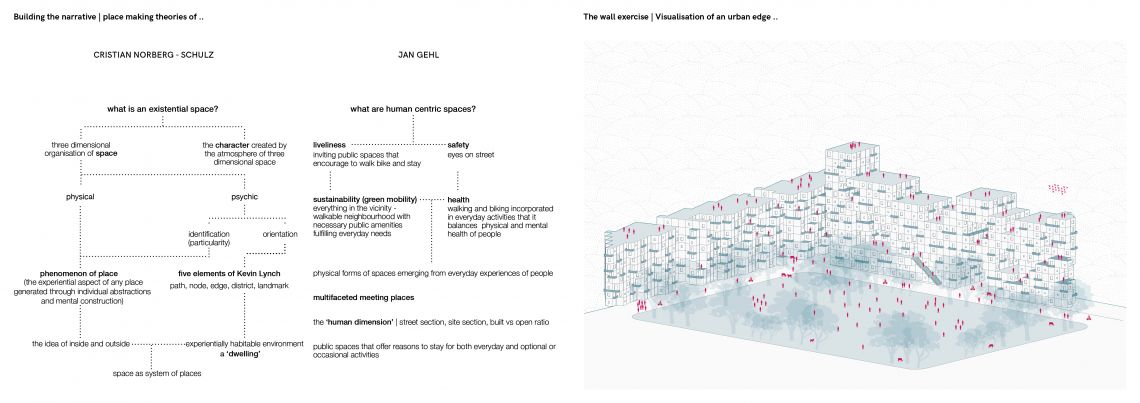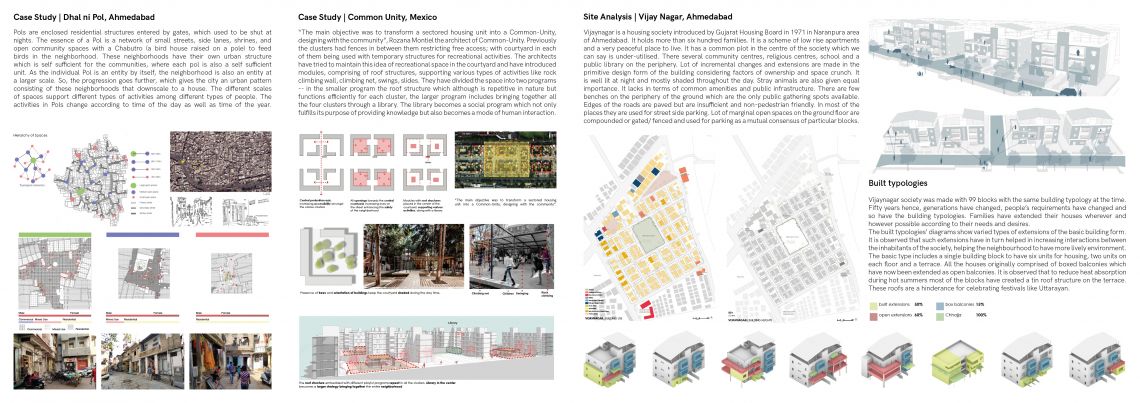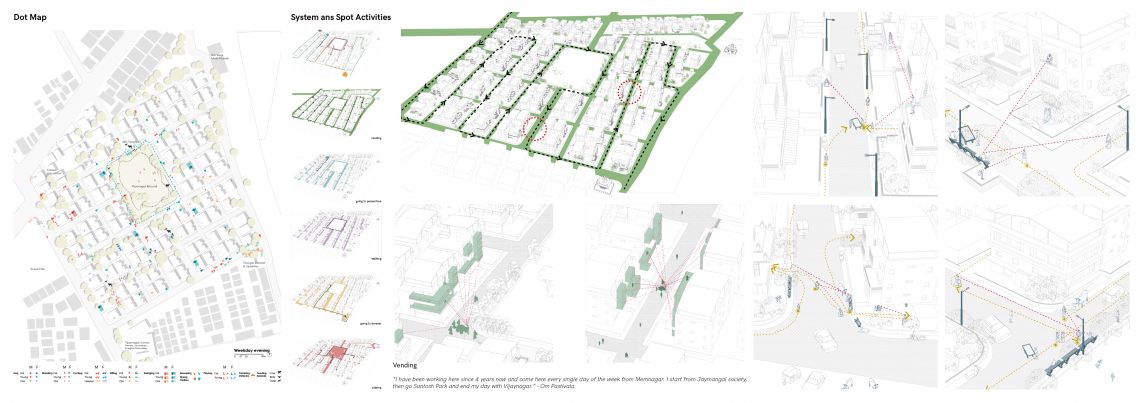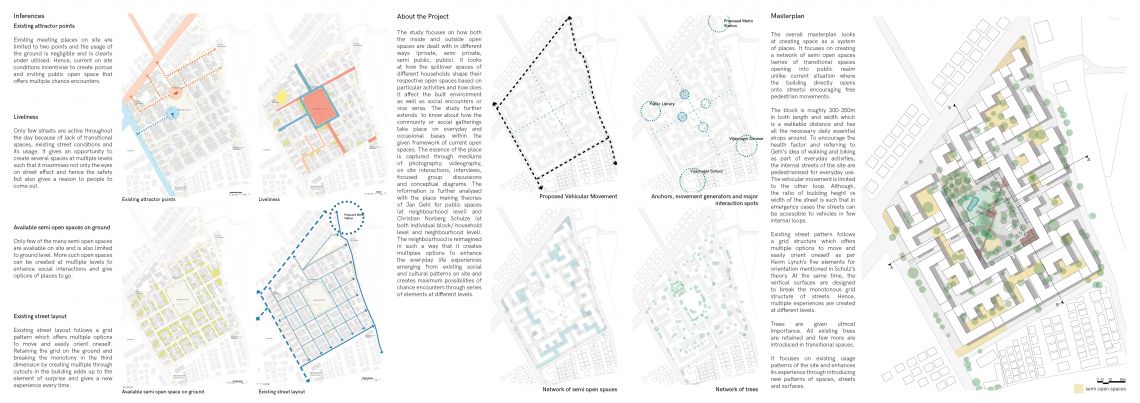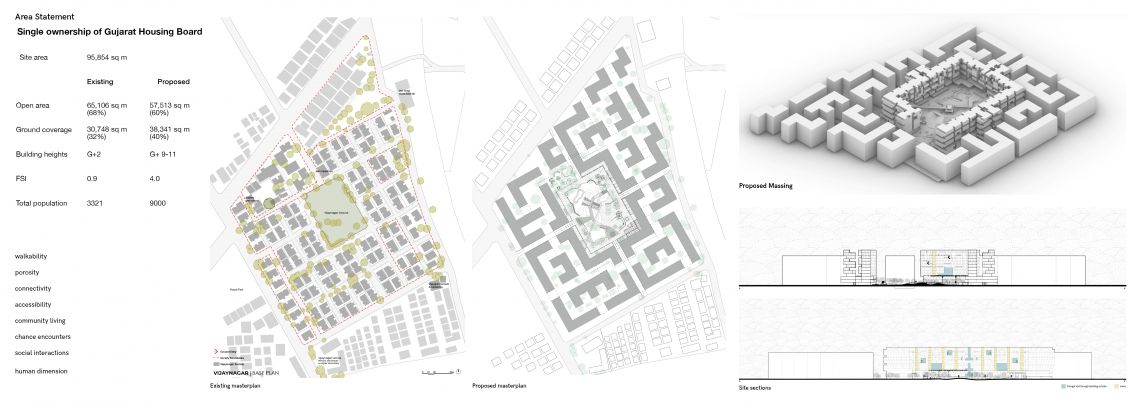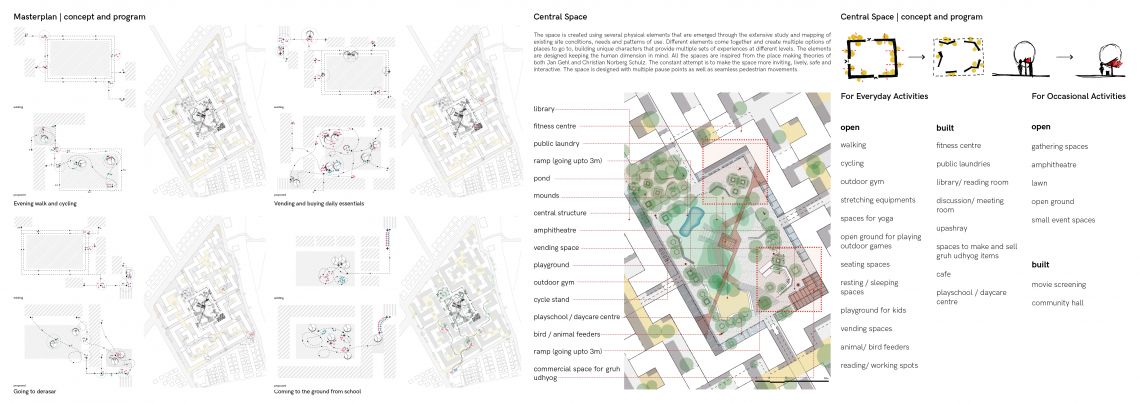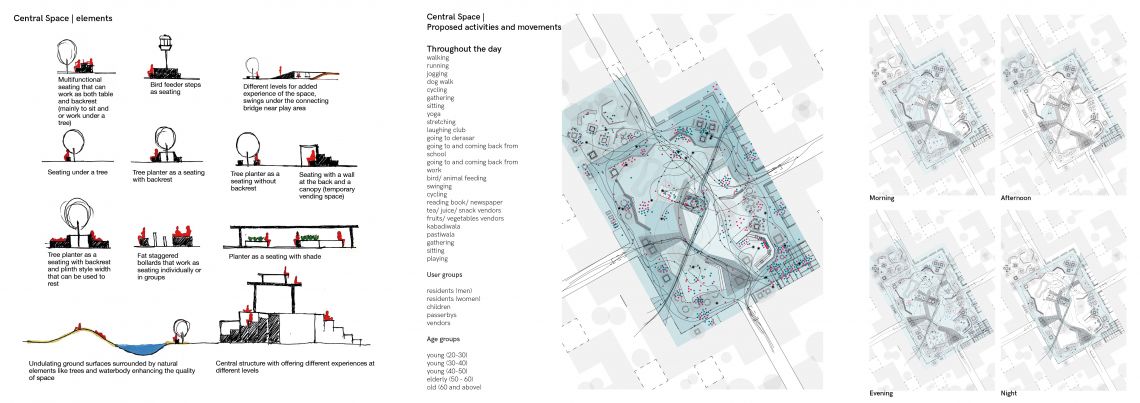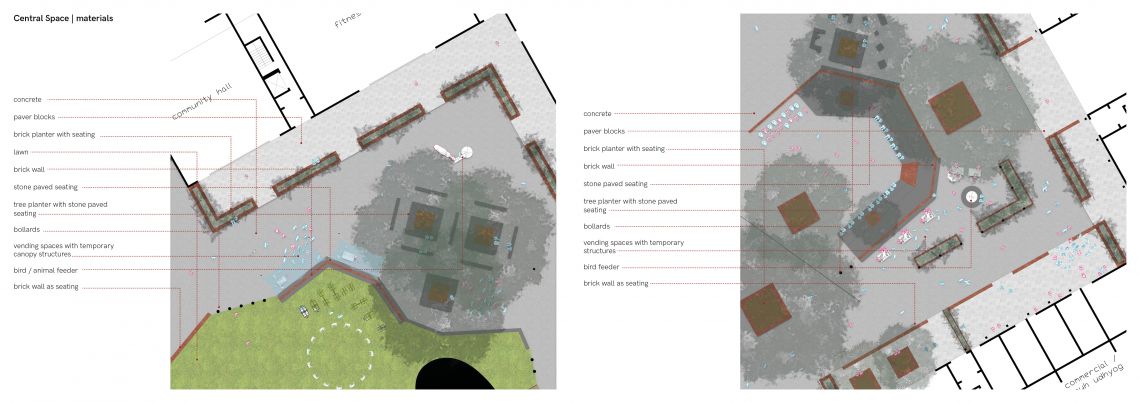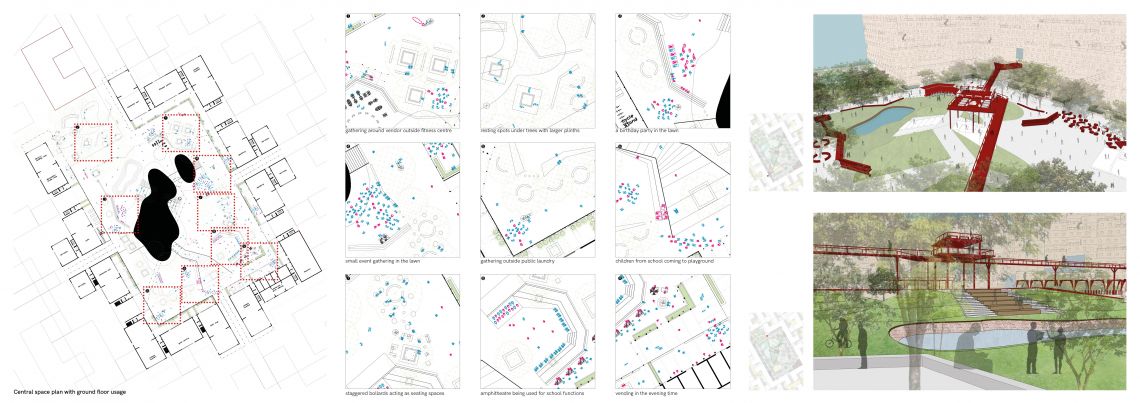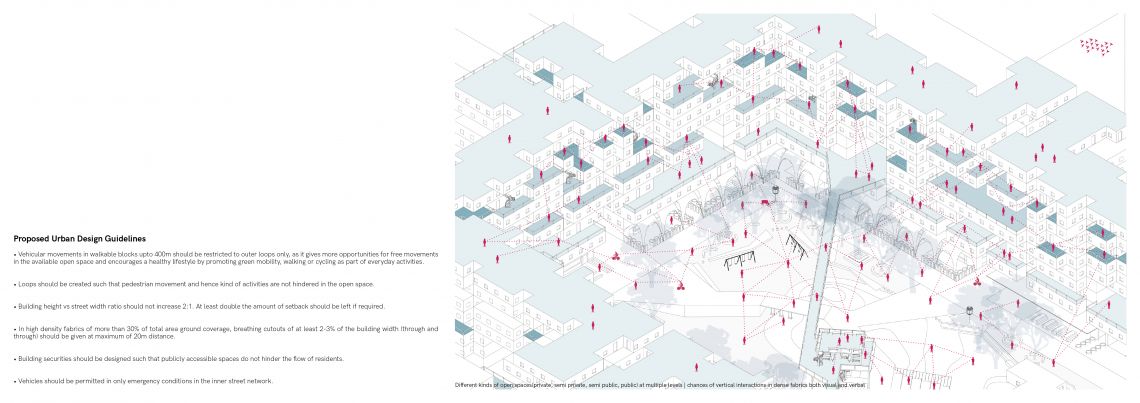Your browser is out-of-date!
For a richer surfing experience on our website, please update your browser. Update my browser now!
For a richer surfing experience on our website, please update your browser. Update my browser now!
Indian cities are acknowledged for its socio - cultural values and the kind of environment that they offer for series of activities to be performed in a public realm. The project is based on a human centric approach that focuses on qualitative negotiations between the inside and outside spaces (private, semi private, semi public, public) at a residential neighbourhood scale. It extends to create ‘a space as a system of places’ based on place making theories of Jan Gehl and Christian Norberg Schulz. The project exhaustively analyses the existing usage patterns (of both everyday and occasional) and offers to enhance the experiences by introducing series of elements, new patterns of spaces, streets and surfaces at multiple levels. It not only multiplies the possibilities of chance encounters but also encourages people to come out, socialise, interact and STAY!
